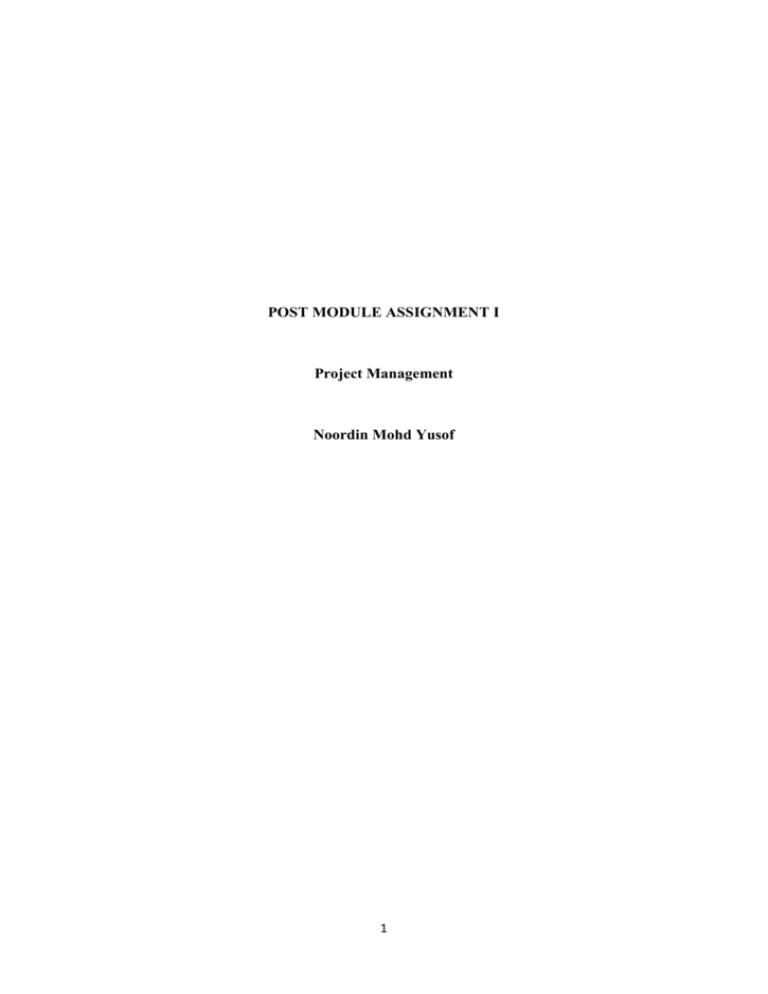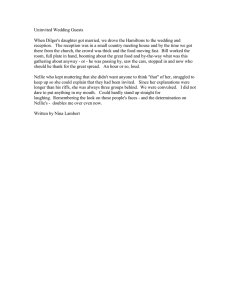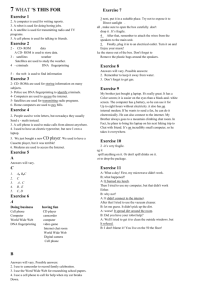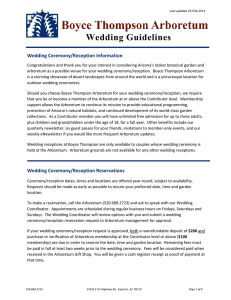Project Management Assignment: Network Diagrams & Critical Path
advertisement

POST MODULE ASSIGNMENT I Project Management Noordin Mohd Yusof 1 Question 1 1.1 Ben is planning to get married at the end of the year. He just attended a Project Management course and attempts to utilize the tools and techniques that he has learnt on the course for planning his weeding. A work breakdown structure was constructed and the details are given in the following. Based on the information given create a network for this project. Note: Do not include summary tasks in the network (i.e., 1.3, Ceremony, is a summary task; 1.2, Marriage license, is not a summary task). Do not consider who would be doing the task when constructing the network. For example, do not arrange “hiring a band” to occur after “florist” because the same person is responsible for doing both tasks. Focus only on technical dependencies between tasks. Hint: Start with the last activity (wedding reception), and work your way back to the start of the project. Build the logical sequence of tasks by asking the following question: In order to have or do this, what must be accomplished immediately before this? Once completed, check forward in time by asking this question: Is this task(s) the only thing that is needed immediately before the start of the next task? Work Breakdown Structure 1. Wedding project 1.1 Decide on date 1.2 Marriage license 1.3 Ceremony 1.3.1 Rent church 1.3.2 Florist 1.3.3 Create and print programs 1.3.4 Hire photographer 1.3.5 Wedding ceremony 1.4 Guests 1.4.1 Develop guest list 1.4.2 Order invitations 1.4.3 Address and mail invitations 1.4.4 Track RSVPs 1.5 Reception 2 1.5.1 Reserve reception hall 1.5.2 Food and beverage 1.5.2.1 Choose caterer 1.5.2.2 Decide on menu 1.5.2.3 Make final order 1.5.3 Hire band 1.5.4 Decorate reception hall 1.5.5 Wedding reception 1.2 Think of a simple project involving not more than 20 activities. Prepare a short description of the project. Construct a work breakdown structure for the said project and draw a network based on the information presented. Question 2 2.1 Based on the following information, construct a network based on the AOA and AON techniques. Act. ID Description Predecessor 1 Order review (A) None 2 Order standard parts (B) A 3 Produce standard parts (C) A 4 Design custom parts (D) A 5 Software development (E) A 6 Manufacture custom parts (F) C,D 7 Assemble (G) B,F 8 Test (H) E,G 2.2 Ali signed a contract to build a stable for UTM. Amongst the clauses in the contract include a RM 500 bonus for completing the project within 15 days and a penalty of RM 100 for each day the project takes longer than 15 working days. The project network for building the stable and the duration for the activities are given in Figure 2.1. Calculate the activity times and the slack for all the activities. Also determine the critical activities, critical path and the project duration. Will Ali get a bonus or a penalty for this project? 3 Question 3 Given the following project information and network (Figure 3.1), what is the probability of completing the product development project in 93 time units? Act. ID Description Opt. (a) Most likely(m) Pess.(b) 1 Design package (A) 6 12 24 2 Design product (B) 16 19 28 3 Build Package (C) 4 7 10 4 Secure patent (D) 21 30 39 5 Build product (E) 17 29 47 6 Paint (F) 4 7 10 7 Test market (G) 13 16 19 4 Act time te Variance 3 C 4 4 D 1 2 A B 3 4 7 9 10 G I J 2 2 1 1 5 E ES SL ID EF 8 1 H Description 6 LS ID 1 LF F 3 Figure 2.1 5 4 ES D SL LS 2 ID EF Description ID LF B 1 5 6 7 A E F G 3 C Figure 3.1 Question 4 The network (Figure 4.1) and details of a project are given in the following. Consider shortening the project duration by crashing the activity duration. Ensure that there is minimum increase in the direct cost. Compute the total direct cost for each project duration. If the indirect costs for each project duration are $400 (19 time units), $350 (18), $300 (17), and $250 (16), compute the total project cost for each duration. Plot the total direct, indirect, and project costs for each of these durations on a costtime graph. What is the optimum cost-time schedule for the project? What is this cost? A Crash Cost (Slope) 20 Maximum Crash Time 1 Normal Time 3 Normal Cost 50 B 60 2 5 60 C 40 1 3 70 D 0 0 10 50 E 50 3 6 100 F 100 3 7 90 G 70 1 5 50 Act 6 Total Direct Cost Indirect Cost Total Project Cost Initial Project Duration: 19 B E 5 6 A C F G 3 3 7 5 D Total Direct Cost $ ________ 10x xxX Project Duration: _______ E B A C F G D Activity changed: ___________ Total Direct Cost $ __________ 10x xxX A Project Duration: _______ E B C F D G Activity changed: _________ Total Direct Cost $ ________ 10x xxX Project Duration: _______ E B A C F D G Activity changed: _________ Total Direct Cost $ ________ 10x xxX Figure 4.1 7





